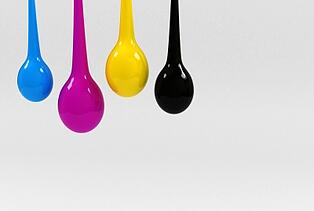When you're crafting a direct mail campaign, a mega-consideration has to be (what else?!) the printing itself. This post is part of our Direct Mail Best Practices series. Do check out our previous blogs to get you set up and ready to go with a new campaign.
Work Backward from the Mailing
Consider the distribution method before you design your direct mail piece. Presumably the campaign is getting sent out via the US mail. Pay attention to the final size, and get some preliminary postage costs to guide you. Will a postcard work? What size? How about a letter campaign, or a single-sheet, folded brochure? Are you producing something more complex, like a box or other dimensional package?
It's foolish not to work alongside your printer and your mailing specialist (who may be one and the same). Before you get too far along in your campaign development, you must figure out the final size of the printed piece/s. This will guide your designer and copywriter.
Less important to the copywriter but critical to your designer (and to your bottom line) is the paper spec'd for your direct mail campaign. Paper is generally the most expensive element in a print campaign. It will influence the printing itself, the design, the final cost, and definitely the postage. While lighter paper stock will keep your postage costs down, it may have a negative influence on your campaign. Admit it: heavier paper stock connotes a sense of “gravitas” and “class” (think of things like letterhead and diplomas).

Offset vs. Digital
What determines whether your job prints on offset presses or digital equipment? It’s a combination of elements. Your final quantity matters, as does the format of your project. Presumably you’re working with a printer who offers both. He or she should be consulted. Ask your printer for advice and suggestions to help optimize your printed piece for whichever printing technology is most appropriate for your needs.
Some rules of thumb to guide you: if you’re printing a few thousand or less, and your final size is pretty standard (think in multiples of 8 ½ x 11”), your job’s a good candidate for digital printing. Also, if you need something printed immediately, you’ll want it done digitally.
Static vs. Personalized
Before studies indicated how effective a personalized direct mail campaign can be, direct mail campaigns consisted of a static printed piece: every recipient received the exact same thing. Those days are coming to an end.
Today’s marketers use data they’ve collected and mined to personalize their direct mail campaigns. Whether you’re inserting recipients’ names on a mailing piece or swapping out large amounts of copy and visuals, you have tremendous opportunities to create memorable print campaigns that speak directly to each person on your list.
Personalized campaigns must be produced on digital presses. Luckily, OnFulfillment can support the most complicated personalization requirements, including co-branding and other variable data printing requirements. We also offer a marketing campaign platform that can support Personalized URLS (PURLS), QR Codes and other technologies to integrate your direct mail and digital messaging.
Bottom line? You must include your printer partner in your early conversations about every direct mail campaign. Request to see samples. Ask for consultations about out-of-the-box formats. Learn what can be done using your own customer and prospect databases.
Printing technologies have come a long way from the dusty old print shops most people still conjure up. Printing is high tech and dynamic. The personalization capabilities will blow your mind.
Image in this blog post courtesy of Idea go / FreeDigitalPhotos.net

